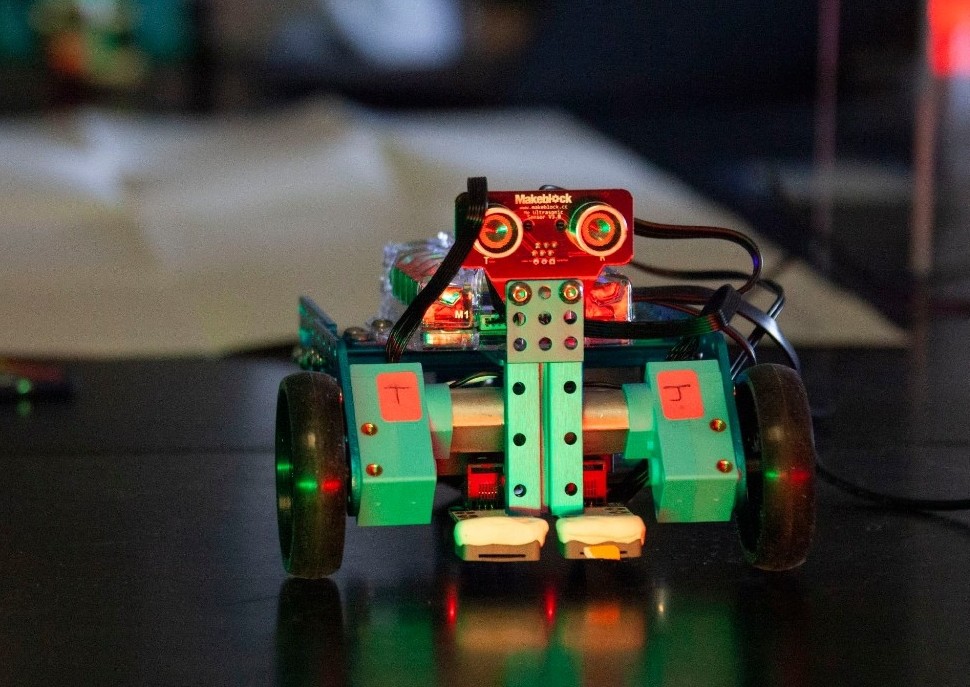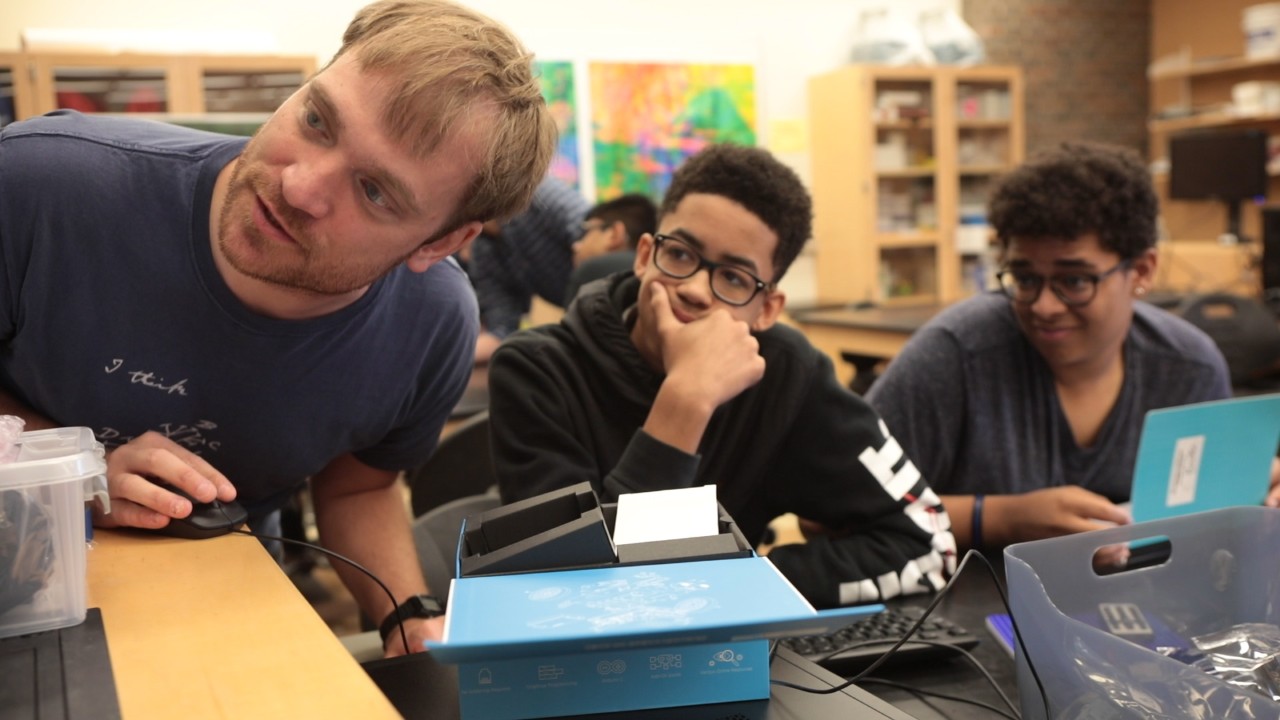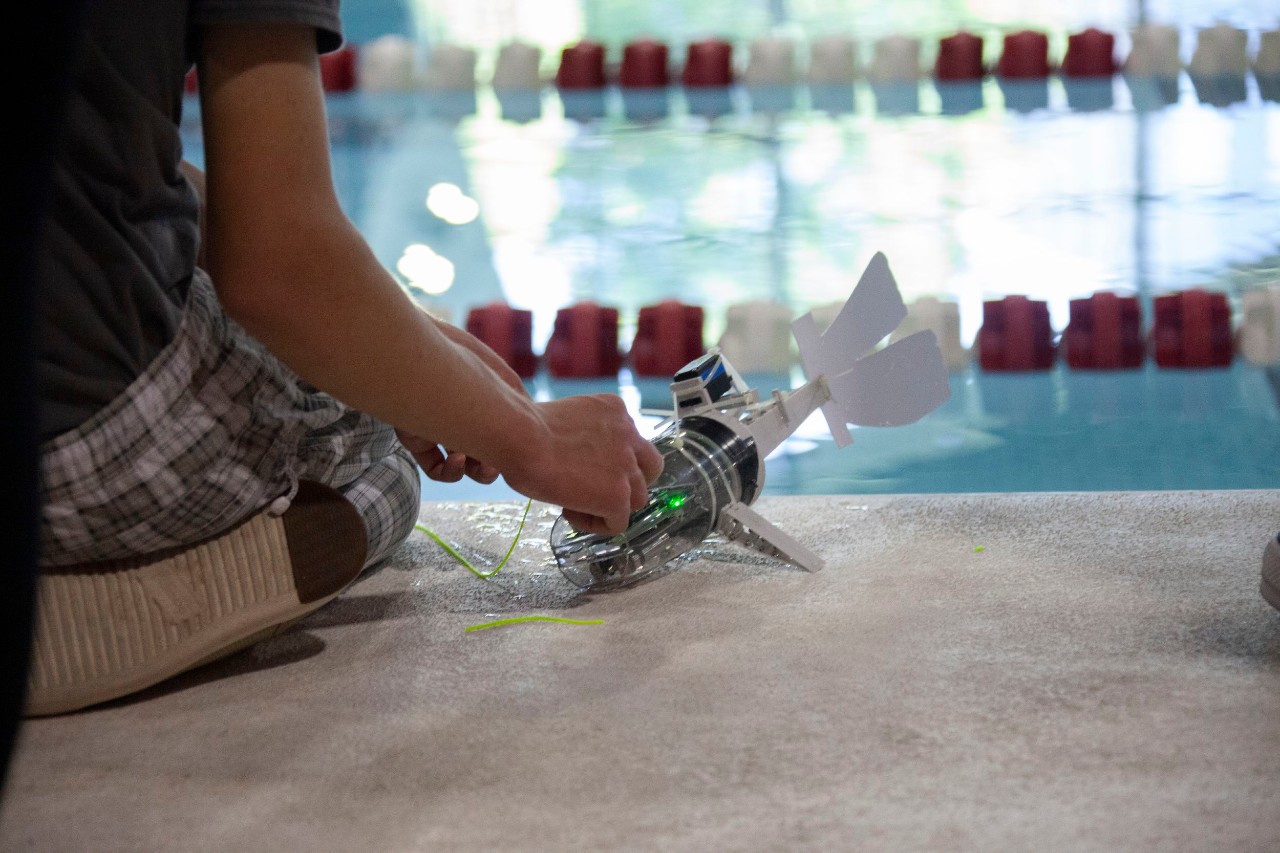
UC receives $3.4M to expand STEM education program
UC's Biology Meets Engineering program is growing in popularity among high schools
The Cincinnati Business Courier highlighted a University of Cincinnati STEM program that was recently expanded by the National Science Foundation.
The NSF will spend $3.4 million to expand UC's Biology Meets Engineering program to three other universities. The program introduces high school students to STEM using robotics exercises that touch on biology and engineering.
UC’s novel program brings high school students to campus for three weeks each summer to learn about the unique ways animals sense the world and integrates that curriculum into high schools across the Tristate. Students apply what they learn about animal senses to building custom robots that use similar sensory information to navigate.
UC also offers high school students a chance to work in labs as paid summer interns. The other universities likewise will adopt this internship program.
Under the new NSF grant, UC will help Bowling Green State University, Ohio University and the University of Akron develop similar programs to reach more high school students.
Since launching the program in 2018, students from 19 schools have participated, UC College of Arts and Sciences Professor Stephanie Rollmann said.
She developed the program with the help of Associate Professors Anna DeJarnette in UC’s College of Education, Criminal Justice, and Human Services and John Layne in biology and Dieter Vanderelst who holds joint appointments in biology and mechanical and electrical engineering in UC’s College of Engineering and Applied Science.
Students learn about both robotics and animal senses in UC labs and then apply what they learn to build custom robots.
Read the Business Courier story.
Featured image at top: UC invites high school students to learn more about animal-inspired robots in its popular Biology Meets Engineering course. Photo/Andrew Higley/UC Marketing + Brand

UC Associate Professor Dieter Vanderelst works with high school students on their robotics project. Photo/Andrew Higley/UC Marketing + Brand

High school students learn about how animals sense the world to develop robots with custom sensors that can navigate an obstacle course. Photo/Andrew Higley/UC Marketing + Brand

Students work on a color vision exercise in a biology lab. Photo/Andrew Higley/UC Marketing + Brand

Students build their own robots using custom sensors that can help them autonomously navigate an obstacle course. Photo/Andrew Higley/UC Marketing + Brand

Students learn about the unique ways animals like bats can sense the world. Photo/Andrew Higley/UC Marketing + Brand

A UC Police Department officer demonstrates to students how police dogs can find objects using their amazing sense of smell. Photo/Michael Miller

Students test their robotic fish in the swimming pool at UC's Campus Recreation Center. Photo/Ravenna Rutledge/UC Marketing + Brand

A closeup of a student's robotic fish. Photo/Ravenna Rutledge/UC Marketing + Brand
Related Stories
Spectrum News: High school students learn STEM in UC program
July 6, 2022
Spectrum News highlights UC's Biology Meets Engineering program which gives high school students an introduction to STEM fields in a project sponsored by the National Science Foundation.
Children learn about UC science, engineering majors during visit
February 19, 2025
Students from the Clifton Area Neighborhood School visit UC to get an introduction to subjects such as science, Classics and engineering.
Fox19: Students mix biology, engineering to build robots
June 23, 2023
Fox19 highlights UC's Biology Meets Engineering program sponsored by the National Science Foundation. The program introduces students to both fields to build animal-inspired robots.
